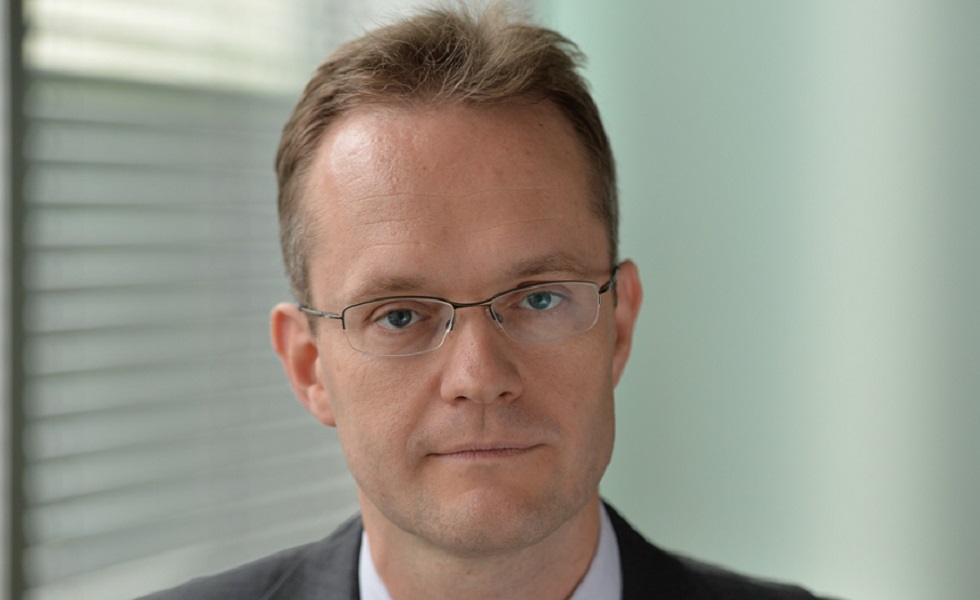BlackRock: Advancing SDGs through fixed income - supply versus demand

Sustainable investing solutions are accelerating as data gains greater sophistication. This development enables investors to create targeted, bespoke solutions, where sustainable investments reflect personal or corporate preferences and ambitions.
By Ronald van Loon, Managing Director Fixed Income Portfolio Manager at BlackRock
In this article, we explore the feasibility of aligning capital allocation decisions to individual SDGs through the lens of a fixed income investor, we evaluate how green, social and sustainable (GSS) bonds are mapped to SDGs and look at the subsequent dynamic between GSS supply and their alignment to SDGs, favoured by a sample investor cohort: Dutch pension funds.
Sustainable investing through the lens of the SDGs
To achieve the ambitious SDGs by 2030, a substantial further redirection of investments is needed. Investors play a pivotal role and in this context data assumes paramount importance. In recent years, significant strides have been made in data availability for SDG indicators thanks to enhanced disclosures by issuers and increased investment from asset managers and third-party data providers in bottomup research. These exciting developments have paved the way for a more targeted approach to sustainable investing, enabling the creation of portfolios that align investment opportunities with specific SDGs and the sustainability goals of end-investors. For investors, the SDGs present a remarkable opportunity to channel investments into sectors that not only yield financial returns but also create tangible societal outcomes.
SDGs in fixed income: the case for GSS bonds
Unlike traditional bonds, GSS bonds are ‘use of proceeds’ instruments that fund projects that have positive environmental outcomes (green bonds), social benefits (social bonds), or a mixture of both (sustainability bonds). The unique dedicated use of proceeds that is a core pillar of the structure of GSS bonds has the potential to deliver impact to investors and generate positive environmental and social outcomes, providing a clear pathway for advancing the SDGs.[1] This asset class is unique as it can be utilised as a funding mechanism for both the public and private sectors. It provides an avenue of public-private partnership in tackling today’s key global challenges, including mitigating climate change, enabling social advancement, eliminating social inequalities, and reversing biodiversity loss.
All Dutch pension funds that have published focus SDGs have at least one of SDGs 7 and 13, or both, in their focus lists.
Investor demand: the case of Dutch pension funds
On the demand side we look in particular at longterm institutional investors with good data availability with regards to focus SDGs: Dutch pension funds.
We have analysed documents from the 50 largest Dutch pension funds and extracted the focus SDGs. Of the 50 largest funds, 39 have made explicit which SDGs they wish to target, representing 93% of assets under management of the top funds.
A few trends emerged. The SDGs that are most heavily supported as measured by % of AUM are the two that are associated with the environment: SDG 13 (Climate action) and SDG 7 (affordable and clean energy). In fact, all Dutch pension funds that have published focus SDGs have at least one of SDGs 7 and 13, or both, in their focus lists. SDG 11 (sustainable cities and communities) and SDG 12 (responsible consumption and production) are also well supported, and one can imagine these being well supported in focus lists as they can be targeted relatively easier by capital market instruments.

Mind the gap: mapping supply to investor demand
The SDG breakdown on the demand side (by percentage of AUM) is compared in Figure 1 to the SDG breakdown on the supply side (by percentage of market value). A few trends stand out. The climate and clean energy objectives of SDG 7 and SDG 13 rank very high in absolute terms on the demand side and on the supply side. What this shows is that there is no shortage of supply and demand for assets that can promote climate and energy efficiency goals. As said before, of the 39 funds that we polled, all had at least SDGs 7 or 13 (or both) as a focus SDG. Although 7 and 13 are also well covered in green bonds, the figure shows that demand exceeds supply in this sample and there appears plenty of latent demand for financing the energy transition and climate initiatives relative to the current supply of GSS assets.
More GSS bonds
In this article, we have combined two recent themes on the supply side and on the demand side of the capital markets, to highlight overlap and shortfall gaps in what SDGs investors can advance through GSS bonds versus what SDGs investors want to advance through their investments. SDGs that are relatively ‘undersupplied’ by the bond market suggest that there is scope for further growth of issuance of GSS bonds to meet demand. We welcome and promote future issuance in bonds that specifically target these SDGs.
This relatively simple comparison has highlighted some themes on what role capital markets can play in advancing the UN SDGs.
|
SUMMARY To achieve the ambitious SDGs by 2030, a substantial further redirection of investments is needed. GSS bonds have the potential to provide a clear pathway for advancing the SDGs. There is a mismatch today between focus SDGs of Dutch pension funds and projects financed by outstanding GSS bonds. There is a role here for targeted engagement in stimulating GSS supply in currently underrepresented areas. |
|
Disclaimer Risk Warnings: Capital at risk. The value of investments and the income from them can fall as well as rise and are not guaranteed. Investors may not get back the amount originally invested. Past performance is not a reliable indicator of current or future results and should not be the sole factor of consideration when selecting a product or strategy. Changes in the rates of exchange between currencies may cause the value of investments to diminish or increase. Fluctuation may be particularly marked in the case of a higher volatility fund and the value of an investment may fall suddenly and substantially. Levels and basis of taxation may change from time to time. Important Information: This material is for distribution to Professional Clients (as defined by MiFID Rules) only and should not be relied upon by any other persons. In the European Economic Area (EEA): this is Issued by BlackRock (Netherlands) B.V. is authorised and regulated by the Netherlands Authority for the Financial Markets. Registered office Amstelplein 1, 1096 HA, Amsterdam, Tel: 020 – 549 5200, Tel: 31-20-549-5200. Trade Register No. 17068311 For your protection telephone calls are usually recorded. Any research in this document has been procured and may have been acted on by BlackRock for its own purpose. The results of such research are being made available only incidentally. The views expressed do not constitute investment or any other advice and are subject to change. They do not necessarily reflect the views of any company in the BlackRock Group or any part thereof and no assurances are made as to their accuracy. This document is for information purposes only and does not constitute an offer or invitation to anyone to invest in any BlackRock funds and has not been prepared in connection with any such offer. BLACKROCK, BLACKROCK SOLUTIONS, and iSHARES are trademarks of BlackRock, Inc. or its subsidiaries in the United States and elsewhere. All other trademarks are those of their respective owners. MKTGH0524E/S-3589294 |










